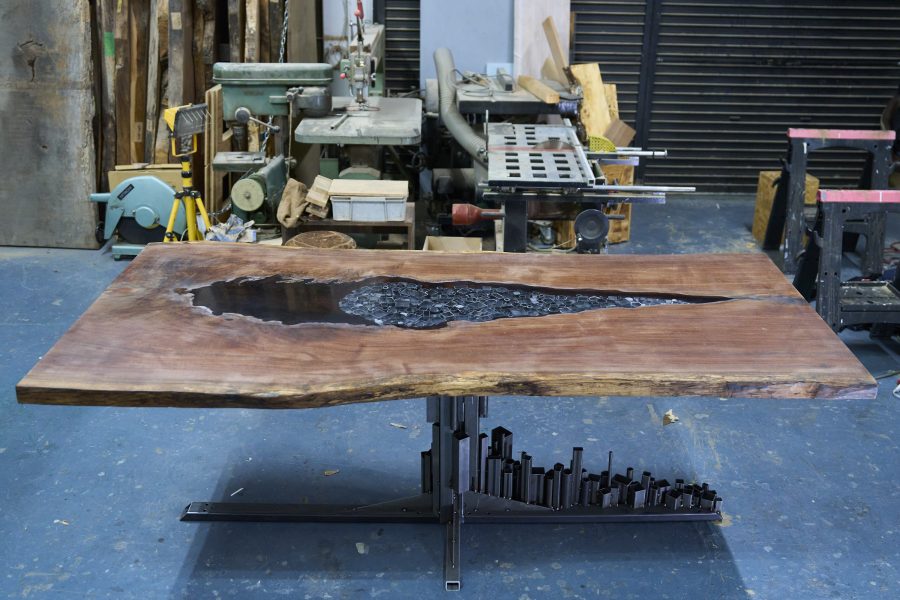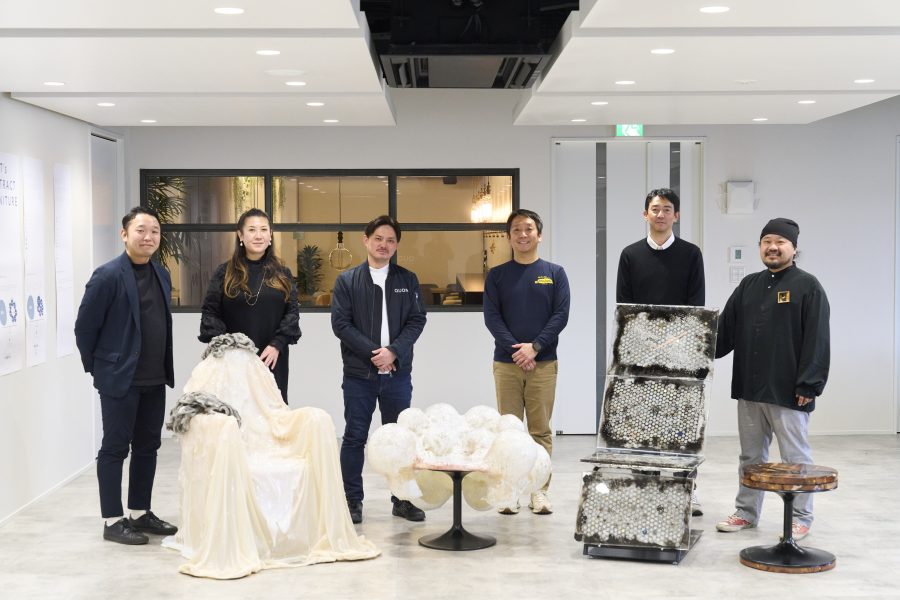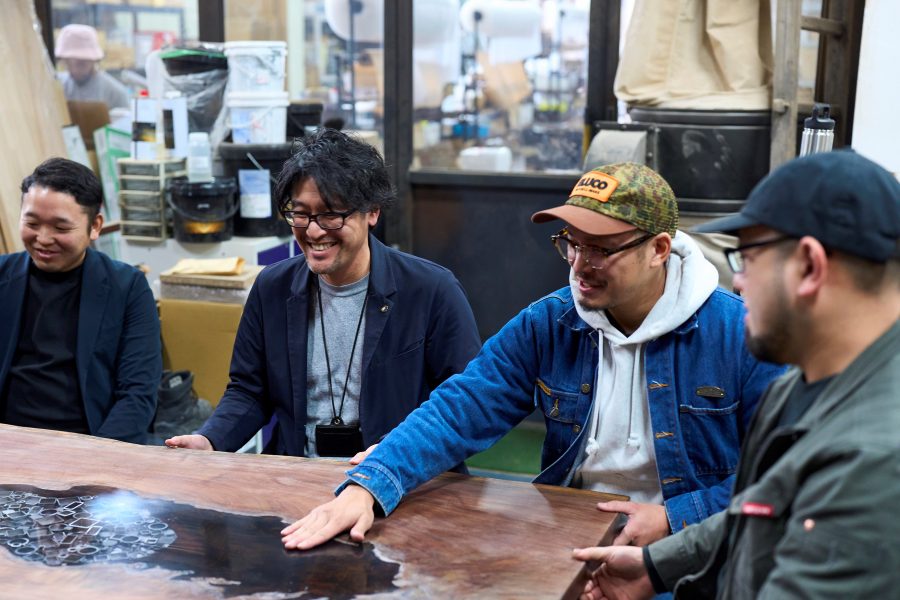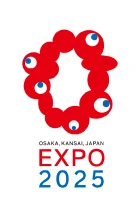
Scraps and waste materials at small factories are worthless when discarded, but can be recycled by adding value to them. The endeavor of craftsmen has entered the final phase.
The business of Tomoyasuseisakusyo started with the production of screws in 1948. At a corner of their factory, there was a table crafted based on their woodworking and ironsmith skills and in-house production capacity without a design drawing.
Their first product came from a single walnut board. Its center decayed, forming a large dent, and it became useless. They said, “We’ll transform it into a cool item and bring it to the site of the Expo,” sparkling their spirit as craftsmen. Yodai Watanabe, who is in charge of ironsmith, filled the dent with scraps while putting them together like a jigsaw puzzle. He used scraps also for the mount and welded them one by one. Koji Mega, who is in charge of woodworking, poured resin into the dent, and polished the surface thoroughly. The craftsmen specializing in ironsmith and woodworking shared a vision and embodied what they imagined as a table. This proves their DNAs that have inherited advanced techniques.
Based on the collaboration among two artists and the staff of small factories, four stools in a sketch were turned into reality as artworks.
Ichiko Miwa designed two stools under the theme: “Artistic chairs like living organisms.” For the mount of one of them, she used an unused discontinued chair of Otsu Co., Ltd., which produces furniture for business. It was covered with slimy resin, to give vibes of a monster. Ultrafine mesh materials that were cut off at Yao Kanaami Co., Ltd. were used for depicting hair.
Yuhei Takada, who worked on the theme: “Positive works from negative waste materials,” designed two stools. For one stool, the craftsman of Koizumi Seisakusyo Co., Ltd., which processes pipes, processed the frame of the stool manually while utilizing his sensibility, which cannot be evaluated with numerical values. For its seat and backrest, the frame left after removing buttons at Matsumura Button was used, and the unique black color of the powder of newspaper burnt by Takada at an oven depicts the circulation. The resin scraps left after the injection molding of plastics at Kawabe Shokai were recycled by Takada into decorations.
For experience-based events, they will conduct a program in which visitors can experience advanced manufacturing technologies that can be seen only at a factory, and are designing a tour at a small factory targeting overseas businesspeople. The participants in this tour are expected to learn about the art of the factory that solves challenging problems, the time-honored business administration and human capital-based business administration in Japan. Small factories, which have continuously worked while evolving manufacturing technologies, attract significant attention from overseas, so they expect that the Expo will provide them with opportunities to receive new orders.
The table and the stools will be displayed together for the first time at the venue of the Expo. A unique atmosphere is generated through the clash of strong individualities. These artworks were produced by unsung craftsmen in small factories with their superb skills.

Four stools and project members
(From left) Mr. Mori of Tomoyasuseisakusyo, Ms. Miwa, an artist, Mr. Kajiwara of Otsu, Mr. Koizumi of Koizumi Seisakusyo, Mr. Fukuda of Kawabe Shokai, and Mr. Takada, an artist

(From left) Mr. Mori, Mr. Matsuo, Mr. Watanabe, and Mr. Mega of Tomoyasuseisakusyo
Share this article


